Vegan Raggmunk Swedish Potato Pancakes Reinvented
40 min read A plant-based take on raggmunk: crispy Swedish potato pancakes made vegan, served with lingonberries, honoring tradition with modern techniques and bold, comforting flavors. October 10, 2025 15:07
The first time I heard the whisper-crackle of raggmunk against a hot pan was on a brittle winter afternoon in Gothenburg. Slush clung to boots by the door, coats steamed on a rack, and somewhere behind a half-length curtain the cook slid a ladleful of batter into a shimmering pool of fat. A halo of potato threads crisped at the edges like lace, and the air filled with that comforting duet of frying and sweetness: golden starch meeting pan, and a warm bloom of lingon from a jar that looked like it had been opened a thousand times before. On the plate, the pancake was thin and mottled, a map of Scandinavia in shades of caramel. A modest scoop of rårörda lingon — just berries stirred with sugar — bled ruby streaks that tasted like frost and sunlight. It was the most Swedish thing I had ever eaten.
I didn’t yet know that I would eventually trade the usual fläsk — the salty, sizzling slices of pork that traditionally accompany it — for something plant-based. I didn’t yet know how to get that same crisp shingle in a vegan batter without sacrificing the hush of creaminess in the center. But I knew the feeling of raggmunk, and feelings, in the kitchen, are signatures as precise as recipes.
What Is Raggmunk, Really?
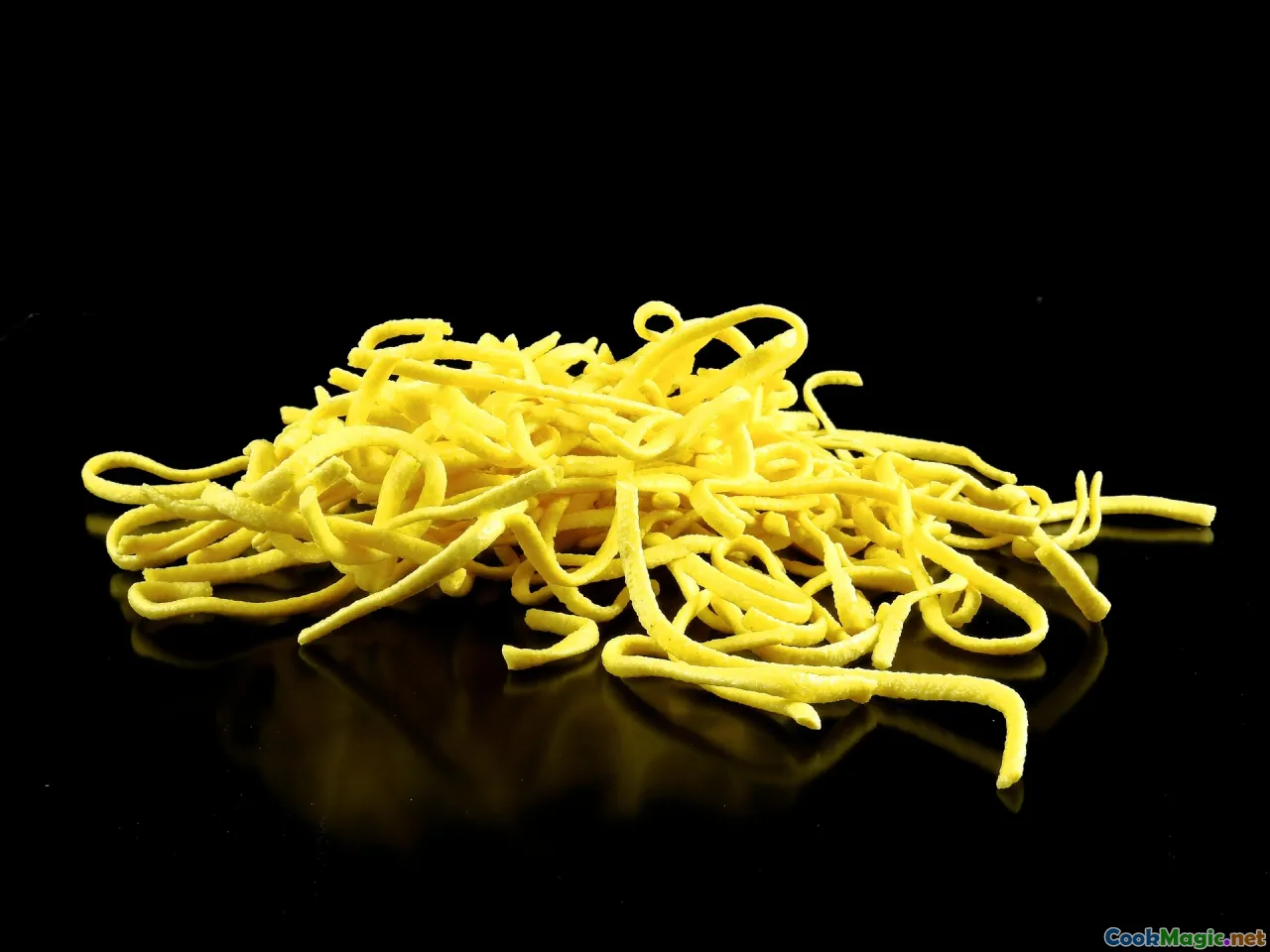
Think of raggmunk as Sweden’s answer to the potato pancake question, a cousin in a family that includes the lacey latke, the proud Swiss rösti, Belarusian draniki, and Irish boxty. But unlike rösti (grated potatoes bound only by themselves) or latkes (shallow-fried mounds, more round than flat), raggmunk is a bona fide pancake: a pourable batter that welcomes grated potato into its midst. The result is a creature with two natures — the crisp golden-edged spirit of a pancake, and the earthy, plush interior of cooked potato.
What sets raggmunk apart isn’t just form; it’s texture. The best ones have panels of transparency where batter thins out into a delicate, lacy net, and a soft, slightly custardy middle where grated potato has fused with starch into a sliceable layer. The top blisters faintly when flipped; the center breathes. You can cut it into quarters and stack them like paper. It should not be oily. It should be as thin as your nerve allows.
Classically, the batter is a spare affair: wheat flour, milk, egg, salt, and grated raw potato whisked in at the last minute. It cooks in butter until every ragged edge goes sugar-brown. Served with fried pork and lingonberries, it’s an emblem of husmanskost — everyday Swedish home cooking — honest and practical, and more than a little nostalgic.
When we reinvent raggmunk vegan style, we honor the original by fixing its ends rather than its center. The ends — the edges, the crispness, the lilt of dairy richness — can be conjured from simple plant-based ingredients if we treat starch like a friend and moisture like a challenge. The center — that soft hum of potato — we leave intact.
A Short History, Told Through Kitchens
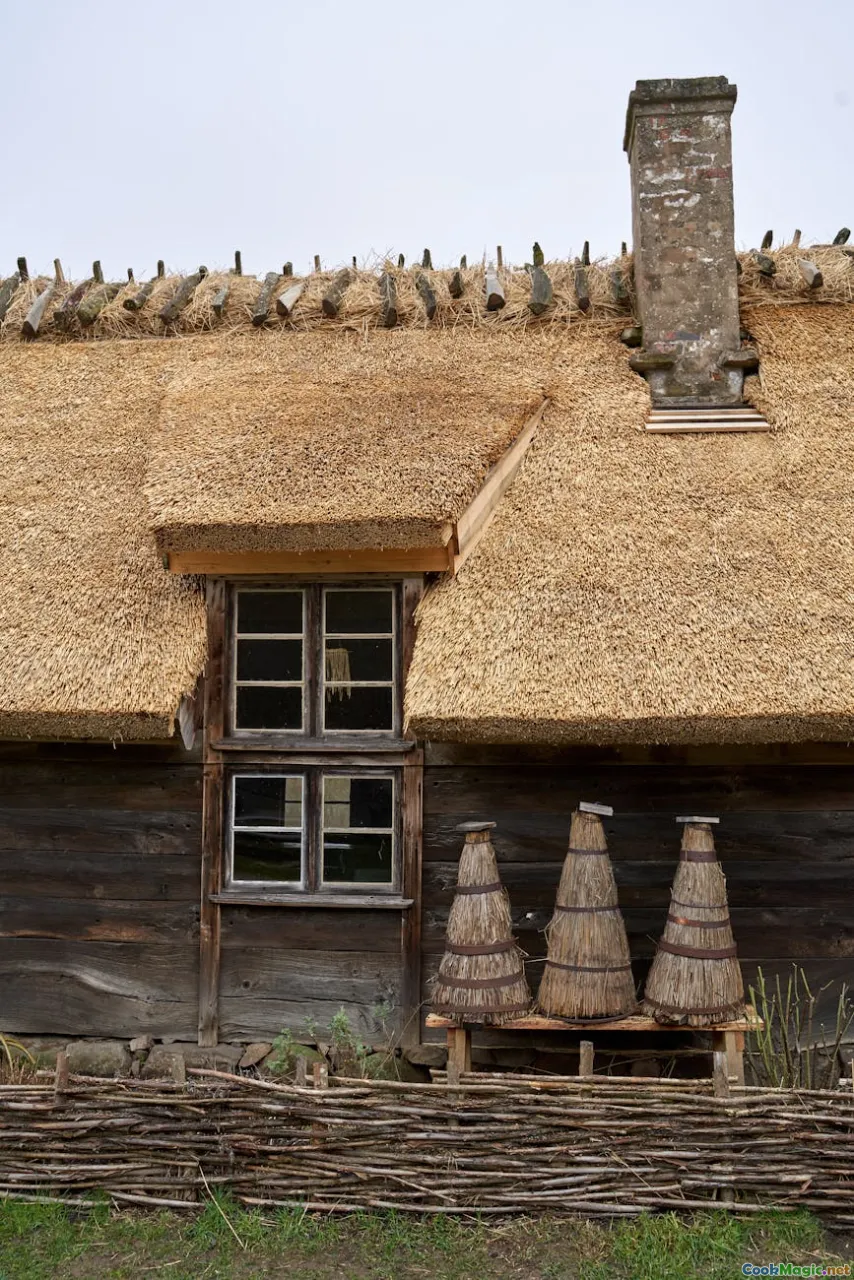
Raggmunk — a name that translates roughly as ragged pancake — likely crystalized as a distinct dish in the early 20th century, by the time potatoes were as domestic as flour and milk. Earlier Swedish cookbooks from the 18th and 19th centuries speak dreamily of pancakes, and later of potato casseroles, dumplings, and puddings, but raggmunk’s particular technique — whisked batter embracing raw shreds — appears to belong to the husmanskost repertoire that took hold as Sweden industrialized and home kitchens sought speed, thrift, and satisfaction.
The word ‘ragg’ nods to the shaggy texture created by grated potato; ‘munk’ can refer to a pancake, a doughnut (think munkar), and in some contexts the pan with hemispherical depressions used for aebleskiver-like treats. There is a bit of linguistic mischief hiding in every hot pan, and that suits raggmunk just fine.
If you ask people across Sweden about raggmunk, the answers come draped in family stories. In Småland, I’ve met cooks who prefer them nearly paper-thin and fried hard in copious butter; in Värmland, the potato shreds might be a touch thicker, and the pancakes served wide as dinner plates. Lunch restaurants — the kind with hand-lettered boards listing dagens — often anchor the week with raggmunk med fläsk. There’s even a day in January when cafes lean into tradition and the smell of pancake grease and lingon sugar hangs over entire neighborhoods.
I like to imagine the dish as a practical innovation gone beloved: when the cupboard had only a bit of flour, a splash of milk, a brace of potatoes, and a pan that never left the stove. The cook’s question was simply, what will keep the family warm? Raggmunk answered with edges that crackle and a center that comforts, in less time than it takes to boil and mash.
The Flavor Memory I’m Chasing

Vegan cooking, at its best, isn’t an act of substitution so much as an act of translation. When I veganize raggmunk, I’m not trying to imitate an egg and dairy pancake. I’m trying to capture the sensation I remember: the way the pancake shatters lightly at first bite, then yields, then merges with the sweet-tart pop of lingon on the tongue, as if someone had put December sun in a jar.
The flavors are simple but not plain. Potato wears its soil lightly after a kiss of heat — a little nutty, a little toasty, with a sweetness that sneaks in as the sugars concentrate on the pan. The fat matters: traditional butter is rich but also carries that cultured tang that coats the mouth. Rapeseed oil — colza, canola — is the closest Swedish pantry analog in vegan cooking, and modern vegan butters are getting good at that cultured echo. White pepper, quiet and floral, adds a Nordic hush where black pepper would blare.
And then there is lingon: bright, tart, almost cranberry but not quite. Rårörda lingon tastes raw and alive, with an edge that cuts through oil and starch. Without the fläsk, you might think you’d miss the salt and smoke. But raggmunk asks only for balance — savory notes, a little fat, a little sour, a little sweet. Give those, and the memory lands.
Ingredient Deep-Dive: Building a Vegan Batter That Behaves

Let’s unpack the pantry.
-
Potatoes: You want a medium-to-high-starch potato that will shed enough amylose to crisp and enough body to set. In Sweden, King Edward and Asterix are excellent choices; elsewhere, look for Russet or Maris Piper. Waxy potatoes make a denser, slightly gummy pancake; not wrong, just different. Size doesn’t matter; freshness and storage do. Older potatoes are drier and often ideal.
-
Flour: Classic all-purpose wheat flour provides structure and a scaffold for the starch; too much and you get dull chew, too little and the pancake tears. I like a mix of AP flour and potato starch. Potato starch helps with shattering crispness and clear, glassy edges.
-
Liquid: Full-fat, unsweetened oat milk is my workhorse — and pleasingly Swedish. Its proteins and beta-glucans give gentle body without sweetness. Pea milk also works and browns beautifully; avoid sweetened almond milks, which can scorch or taste dessert-like.
-
Binder: Instead of egg, we’ll use aquafaba — the viscous liquid from a can of chickpeas. Its proteins and saponins foam and set with heat, giving lift and cohesion. If you prefer to avoid aquafaba, 2–3 g of psyllium husk whisked into the liquid can create an effective network, though the texture leans bouncy if overdone. A spoonful of chickpea flour adds savor and binding but can introduce a beany note unless cooked well.
-
Fat: Cold-pressed rapeseed oil for frying, backed up with a little vegan butter for that buttery aroma. If using only oil, a drop of lactic acid (or a teaspoon of oat crème fraîche) in the batter gives a cultured echo.
-
Seasoning: Fine salt and white pepper are canonical. A microplane’s worth of grated yellow onion adds sweetness and aroma — traditional and optional.
-
Acidity and pH: A small splash of apple cider vinegar or a pinch of citric acid tightens the batter and boosts browning by affecting pH and protein behavior in aquafaba.
-
Hydration: The secret of luminous crisp lies in controlling water. We will salt the grated potato briefly to draw moisture, squeeze hard, then reincorporate the potato’s sedimented starch. That starch is free crispness.
Step-by-Step: Vegan Raggmunk, Restaurant-Crisp at Home
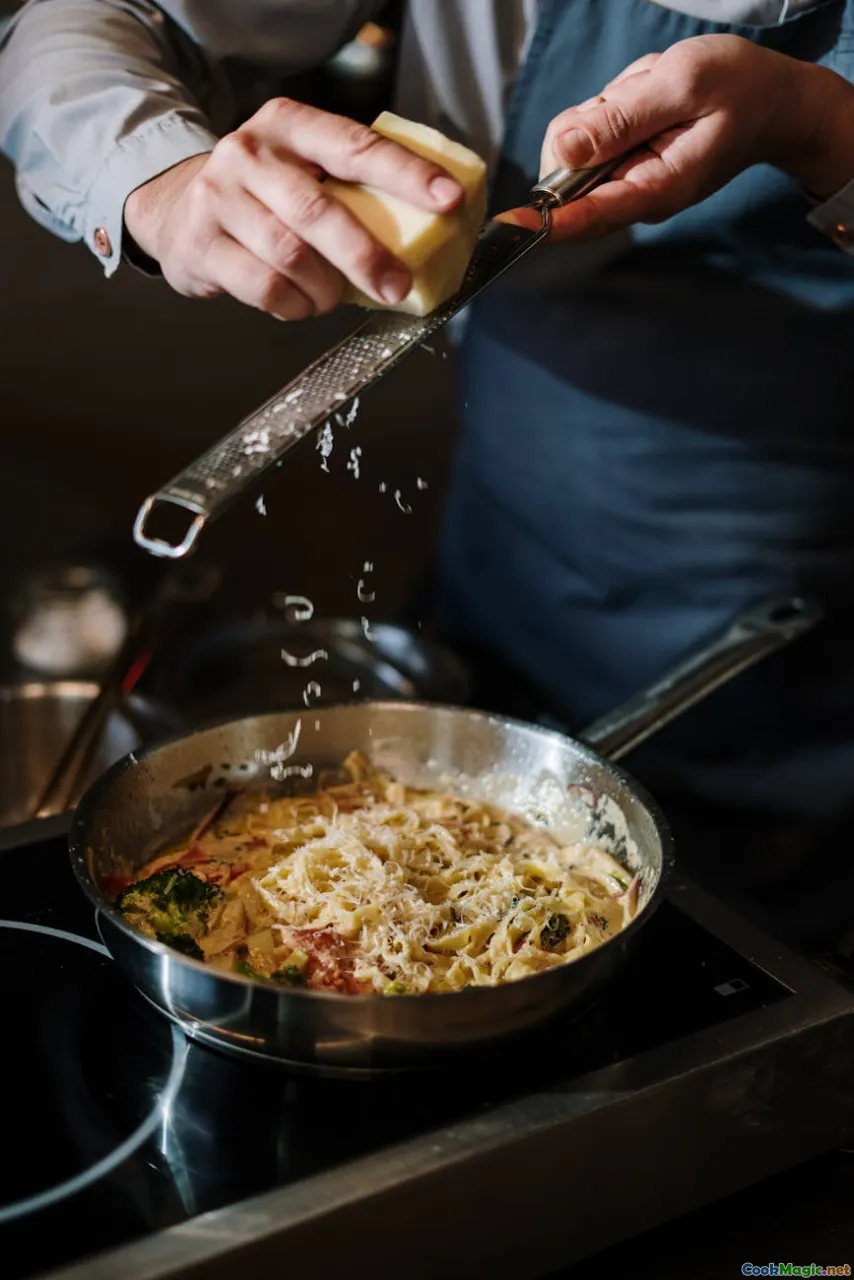
Serves 3–4 as a main, 4–6 as a starter
Ingredients:
For the pancakes
- 600 g starchy potatoes (King Edward, Asterix, Russet, or Maris Piper)
- 30 g all-purpose flour
- 15 g potato starch
- 250 ml full-fat, unsweetened oat milk (barista style preferred)
- 60 ml aquafaba (from a can of chickpeas), lightly whipped until foamy
- 1 tsp fine salt, plus extra for the potatoes
- 1/4 tsp ground white pepper
- 1–2 tsp grated yellow onion (optional but lovely)
- 1 tsp apple cider vinegar or 1/2 tsp lactic acid solution
- 1/4 tsp baking powder (optional, for extra lift)
- 30 ml cold sparkling water (optional, for lacy edges)
To cook
- 3–4 tbsp cold-pressed rapeseed oil, plus more as needed
- 2 tbsp vegan butter (optional but recommended)
To serve
- Rårörda lingon (see below)
- Pressgurka — quick-pressed cucumber — or a crisp winter salad
- Vegan fläsk alternatives (see the next section)
Rårörda lingon
- 200 g lingonberries (fresh or thawed from frozen)
- 100 g granulated sugar
- Pinch of salt
Stir berries with sugar and salt until glossy and syrupy, 5–10 minutes. Let stand while you cook; the sugar will draw juice. Refrigerate leftovers — they keep for weeks.
Method:
-
Mix the batter base. In a bowl, whisk flour, potato starch, salt, white pepper, and baking powder if using. Stream in oat milk and vinegar, whisking smooth. If using sparkling water, wait to add it until just before frying. Let the batter rest 10 minutes; this hydrates the starch and flour and relaxes air bubbles for even browning.
-
Prep the potatoes. Peel them if the skins are rough; otherwise, leave skins on for mineral snap. Coarsely grate on the large holes of a box grater. Toss with a pinch of salt and the grated onion. Let sit 5 minutes to draw moisture.
-
Squeeze and save the starch. Gather the grated potato in a clean kitchen towel and twist hard over a bowl. You want to extract as much liquid as you can. Set the potato shreds aside; let the expelled liquid sit a few minutes until white starch settles at the bottom. Carefully pour off the brownish water and scrape the damp starch back into the batter — it’s free crisping power.
-
Bring it together. Fold the squeezed potato into the batter. Adjust consistency with sparkling water if you like a thinner, lacier pancake — the batter should be pourable and coat a spoon thinly. Finally, fold in the foamy aquafaba gently.
-
Heat the pan. Set a well-seasoned cast-iron skillet (or a heavy stainless pan) over medium-high heat. When a droplet of water skitters, add a tablespoon of oil and a small knob of vegan butter. You want a shimmering film, not a deep fry.
-
Fry. Ladle in a scant 1/3 cup of batter for a small pancake or 1/2 cup for a larger one, swirling the pan to spread it thin. You should hear a lively sizzle. Adjust heat to maintain a steady, cheerful sear without smoking. The edges will turn translucent and then gold.
-
Flip once. After 2–3 minutes, when the underside is deep golden with faint brown freckles, slide a thin spatula under and flip in one confident motion. Cook 1–2 minutes more, pressing lightly if needed for even contact.
-
Hold hot. Move finished pancakes to a wire rack set over a baking sheet in a low oven (90–100°C). Wipe and re-grease the pan between batches as needed.
-
Serve immediately with rårörda lingon and your choice of plant-based fläsk. Add pressgurka for brightness.
Chef’s notes:
- Surface temperature matters. If you have an infrared thermometer, aim for 190–205°C on the pan. Too cool and the pancake drinks fat; too hot and the edges burn before the center sets.
- Consistency is queen. Thin batter = lacy edges, crisp plus tenderness. Thick batter = heftier chew, more rösti-like.
- Salt is a tool. A pinch in the grated potato extracts water you don’t want. Remember to compensate in the batter.
- Don’t fear the first pancake. It teaches you your pan. Adjust the second and third and you’re golden.
The 'Fläsk' Question: Plant-Based Sides with Swedish Soul
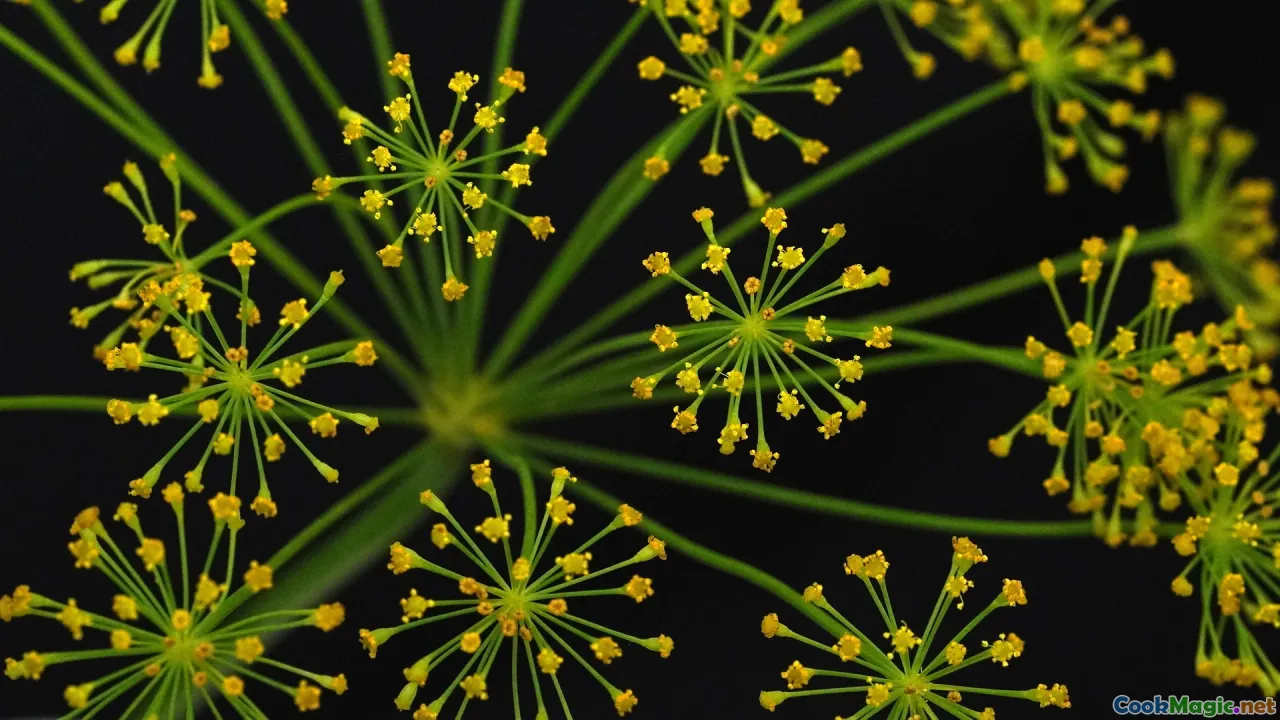
Raggmunk’s traditional best friend is fried salted pork — fatty, crisp, undeniably savory. To bring that same counterpoint in a plant-based way, we’re looking for three things: salt, umami, and caramelized chew.
Two approaches I love:
- King oyster mushroom rashers
- Slice large king oyster mushrooms lengthwise into 3–4 mm slices. Use the stem for broad, bacon-like pieces; caps can be cut similarly.
- Marinate 15 minutes in a mix of 1 tbsp light soy sauce, 1/2 tbsp maple syrup, 1 tbsp rapeseed oil, a pinch of smoked salt or paprika, and a dash of apple cider vinegar.
- Fry over medium-high heat in a slick of oil until edges turn mahogany and the centers remain slightly tender. Finish with fresh-cracked white pepper.
- Celeriac 'bacon'
- Peel a celeriac and cut it into thin rectangular slabs, then into 1 cm wide 'rashers.'
- Toss with 1 tbsp rapeseed oil, 1 tsp light soy sauce, 1/2 tsp dark sugar, 1/4 tsp liquid smoke (optional), and a pinch of garlic powder.
- Roast at 200°C on a lined tray until edges char and pieces are pliable-chewy, 15–20 minutes, flipping once.
Serve either option alongside rårörda lingon for sweetness and acidity, and add something green and crisp:
Pressgurka (pressed cucumbers)
- Thinly slice a cucumber. Toss with 1 tsp salt and 1 tsp sugar in a colander; let weep 10 minutes. Squeeze gently.
- Mix 3 tbsp distilled vinegar, 2 tbsp sugar, a pinch of salt, and 2 tbsp cold water until sugar dissolves. Combine with cucumber and a handful of chopped dill. Chill.
If you crave creaminess, a spoonful of vegan crème fraîche — oat-based varieties available in Sweden are excellent — brings silk and tang that echo the dairy past without stealing the scene.
Plating, Pairing, and Seasonality
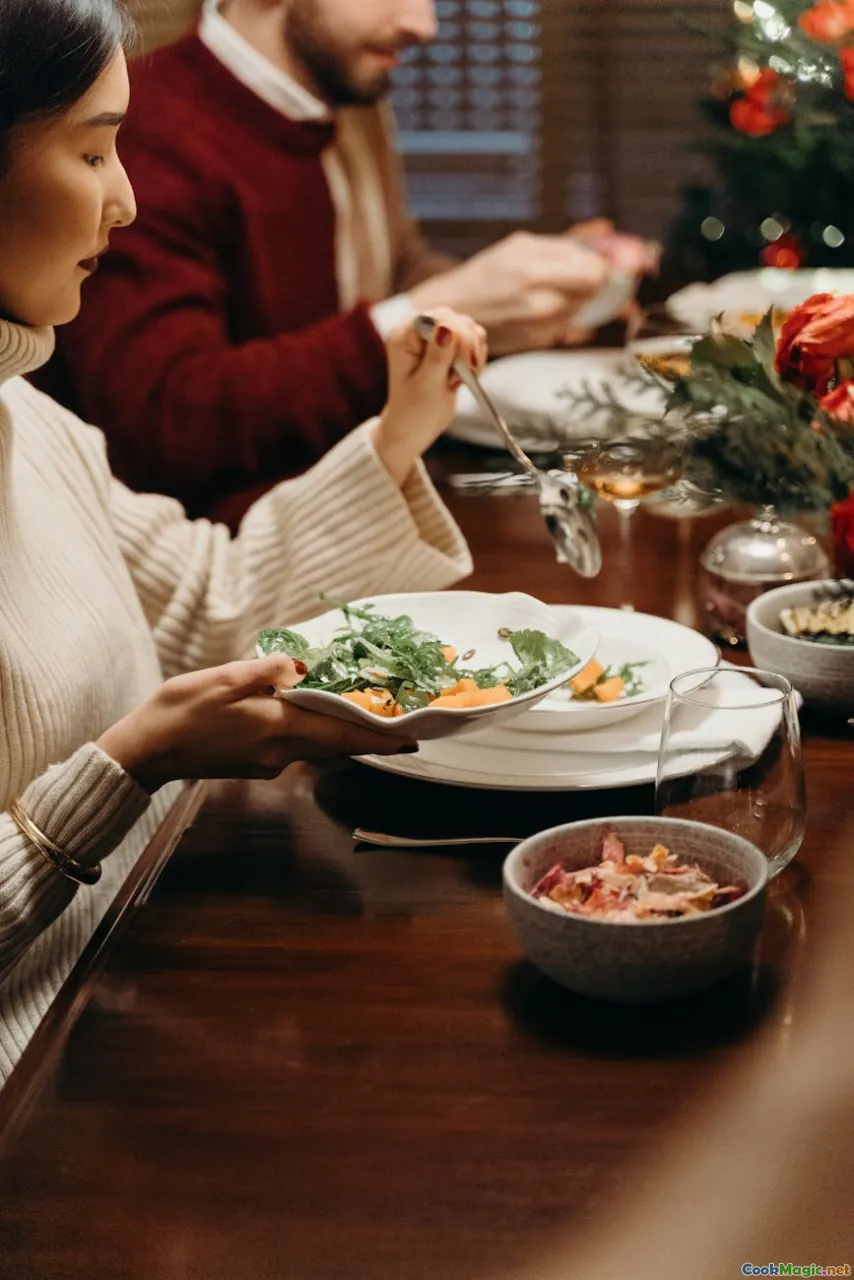
Plating raggmunk is a study in restraint. Slide two or three overlapping pancakes onto a warm plate, tuck in a fan of mushroom or celeriac rashers, and add a generous spoonful of rårörda lingon. A tangle of dill-fragrant pressgurka brightens the edges. If chanterelles are in season, a handful sautéed with a whisper of vegan butter and parsley on top makes for Nordic theater.
Beverage pairings are both traditional and playful:
- Lättöl or a crisp pilsner nods to the lunch table.
- A bracing shot of dill or caraway aquavit bridges richness with herbal lift — or keep it non-alcoholic with a caraway-spiked tonic.
- Cloudy apple must or a dry Scandinavian-style cider hums with the pancake’s autumnal notes.
- Coffee, strong and black, is never wrong.
Seasonality moves the garnish:
- Autumn: golden chanterelles (kantareller), pickled chanterelles, and the first tart apples sliced thin.
- Winter: shaved fennel and dill salad with lemon; pickled red onions.
- Spring: ramp leaf oil or chive blossom vinegar dotted around the plate.
- Summer: new potatoes are too waxy for the pancake but lovely as a chilled salad to accompany a thinner, crisper raggmunk.
The Science of Crisp: A Small Obsession
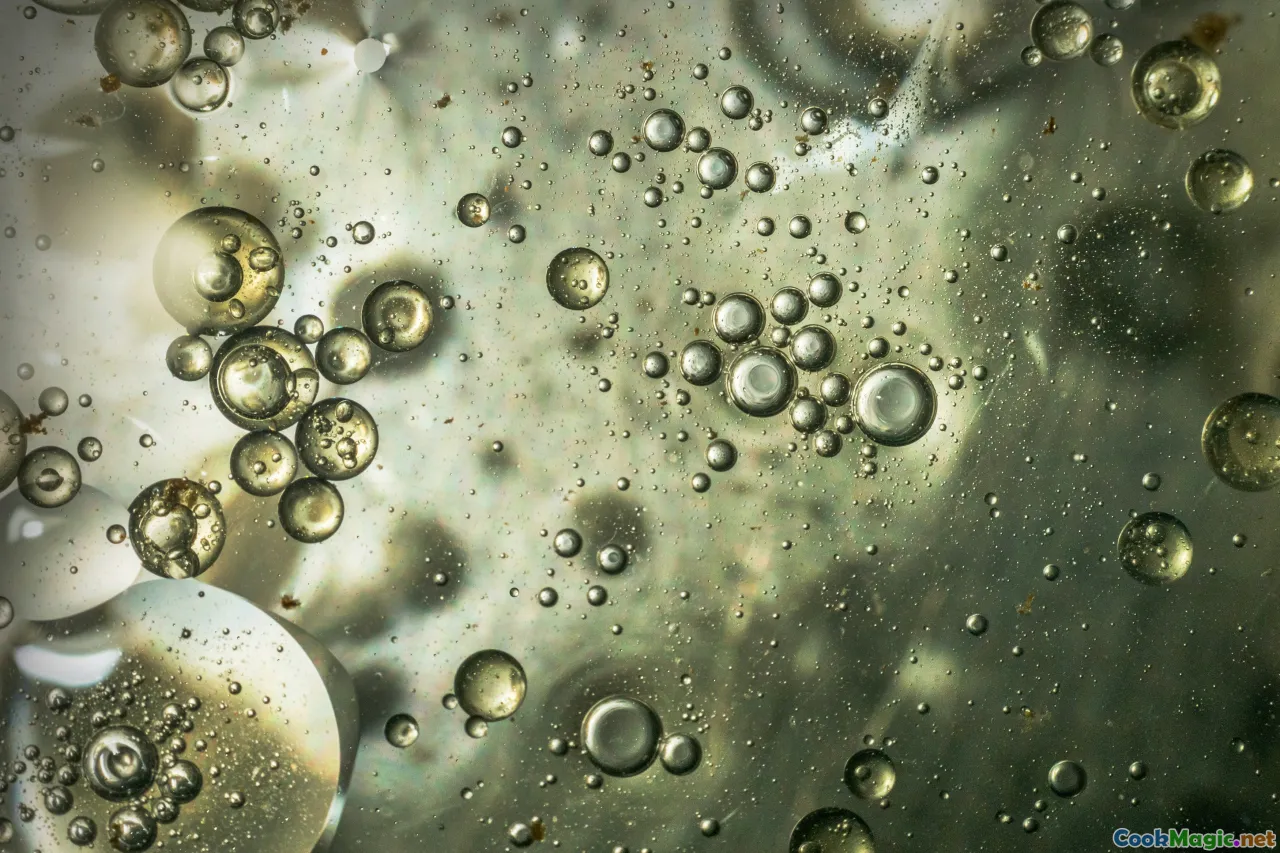
Crispness is an event, not a thing. It happens when moisture turns to steam quickly enough to lift and separate starch networks while heat drives Maillard reactions on the surface. In raggmunk, you’re balancing three phenomena:
-
Starch gelatinization: As the batter heats, potato starch granules absorb water and swell; amylose leaches out and forms a gel that sets the pancake. By squeezing the potatoes and then reclaiming the sedimented starch, you concentrate amylose where you want it — at the interface with the pan.
-
Protein network formation: Aquafaba doesn’t act like egg, but it does provide a delicate structure once heated. Its proteins denature and set, capturing bubbles and giving tender resilience. This network helps the pancake flip in one piece and keeps the interior from turning gluey.
-
Evaporation at the pan: Thin batter and a hot, well-oiled pan mean water leaves fast and evenly, creating those lacy nets as the pan’s heat etches away the last moisture at the edges. If the batter is too thick or the heat too low, you get soggy, greasy centers.
You can play with pH to encourage browning; a touch of baking powder raises pH and helps Maillard reactions without tipping into soapy flavors. Avoid baking soda unless carefully balanced; it can dull flavors and make the color muddy.
If you want a dramatic lacey halo, thin a small portion of the batter with sparkling water and dot it around the edges after the pancake begins to set. The CO2 escapes, making tiny bubbles that fry into a crispy web.
Regional Nuance and Modern Twists
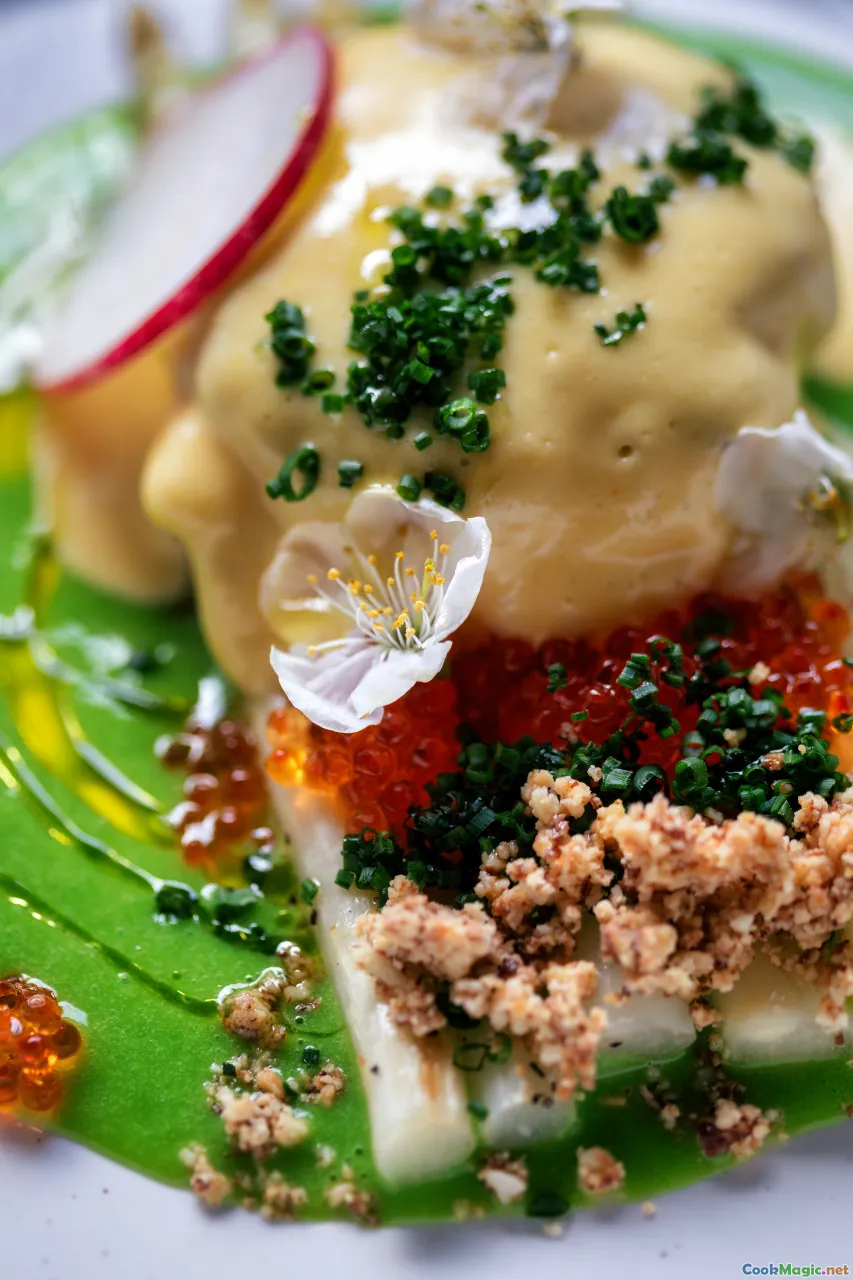
Ask five Swedes how they like their raggmunk and you’ll get six answers. In Östergötland, some prefer neat, plate-wide rounds; in Småland, cooks often chase the thinnest possible flap while still holding together. Up north, I’ve seen sturdier versions served to stand up to long winter days, occasionally with a spoon of browned (vegan) butter on top.
Modern chefs have nudged the dish in elegant directions without losing its heartbeat:
- Charred leek ash whisked into the batter for smoky depth.
- Beet-brine-pickled red onions as garnish to echo the lingon’s color.
- A veil of shaved raw mushroom dressed lightly in lemon and salt to mimic pork’s savor from a different angle.
- A dab of spruce tip oil — a vivid green, citric-woodsy finish that threads the forest into the plate.
These riffs work because they respect the dish’s geometry: crisp, tender, tart, savory. They dance around the circle without stepping off it.
Pantry and Equipment Notes
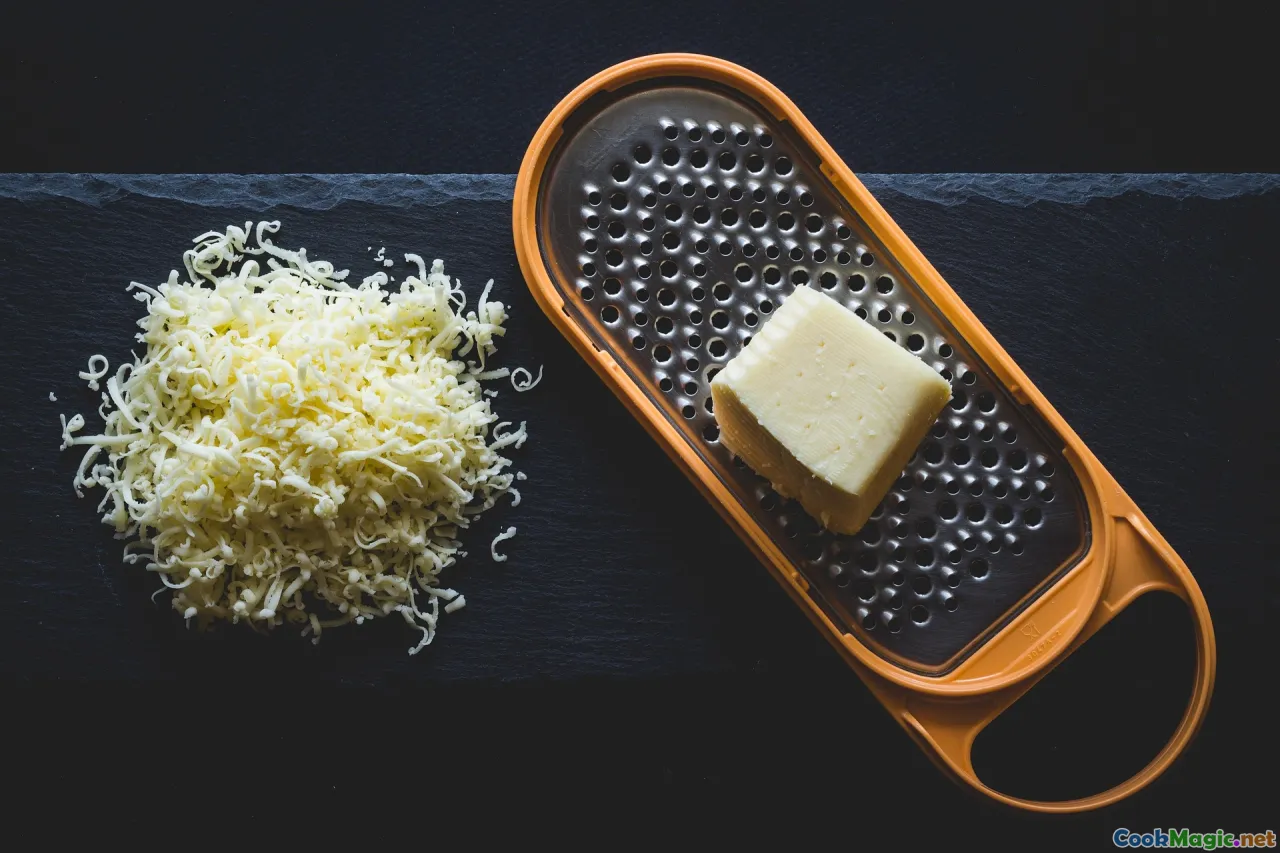
- Grater: The large holes of a box grater give ideal texture — enough shred to tangle, not so fine that you veer into hash browns. A food processor with a coarse disc saves time for large batches.
- Pan: Cast iron holds steady heat and makes gorgeous crust. Well-preheated stainless is a close second; nonstick gives ease but less browning.
- Spatula: A thin, flexible metal spatula slips under edges cleanly. A wide fish spatula is perfect for flips in a small pan.
- Bowl and towel: You need a sturdy towel or cheesecloth and a large bowl for squeezing and capturing potato liquid and starch.
- Scale: Grams matter. Potatoes vary in water content; weighing helps you tune liquid.
- Thermometer: Optional, but if you cook a lot of pancakes, an infrared thermometer is a tiny obsession worth having.
Troubleshooting: If the Pancake Misbehaves

- Pancake drinks oil and feels heavy: Pan too cool, batter too thick, or potatoes too wet. Increase heat slightly, thin the batter with sparkling water, and squeeze the potatoes harder next time.
- Edges burn before center sets: Heat too high or pan too hot. Lower the flame, use a touch more oil, and consider smaller pancakes for better heat transfer.
- Pancake breaks when flipping: Batter too thin or not enough structural protein. Fold the aquafaba a bit more and let the first side cook longer for a firmer set before flipping.
- Bland flavor: Use white pepper generously; add a whisper more salt, or a teaspoon of chickpea miso to the batter for savor.
- Too gummy inside: Overmixing once potatoes are added can push free starch into glue territory. Fold gently, cook through, and hold in the oven for a minute to let steam redistribute.
Sustainability and the Comfort of Thrift
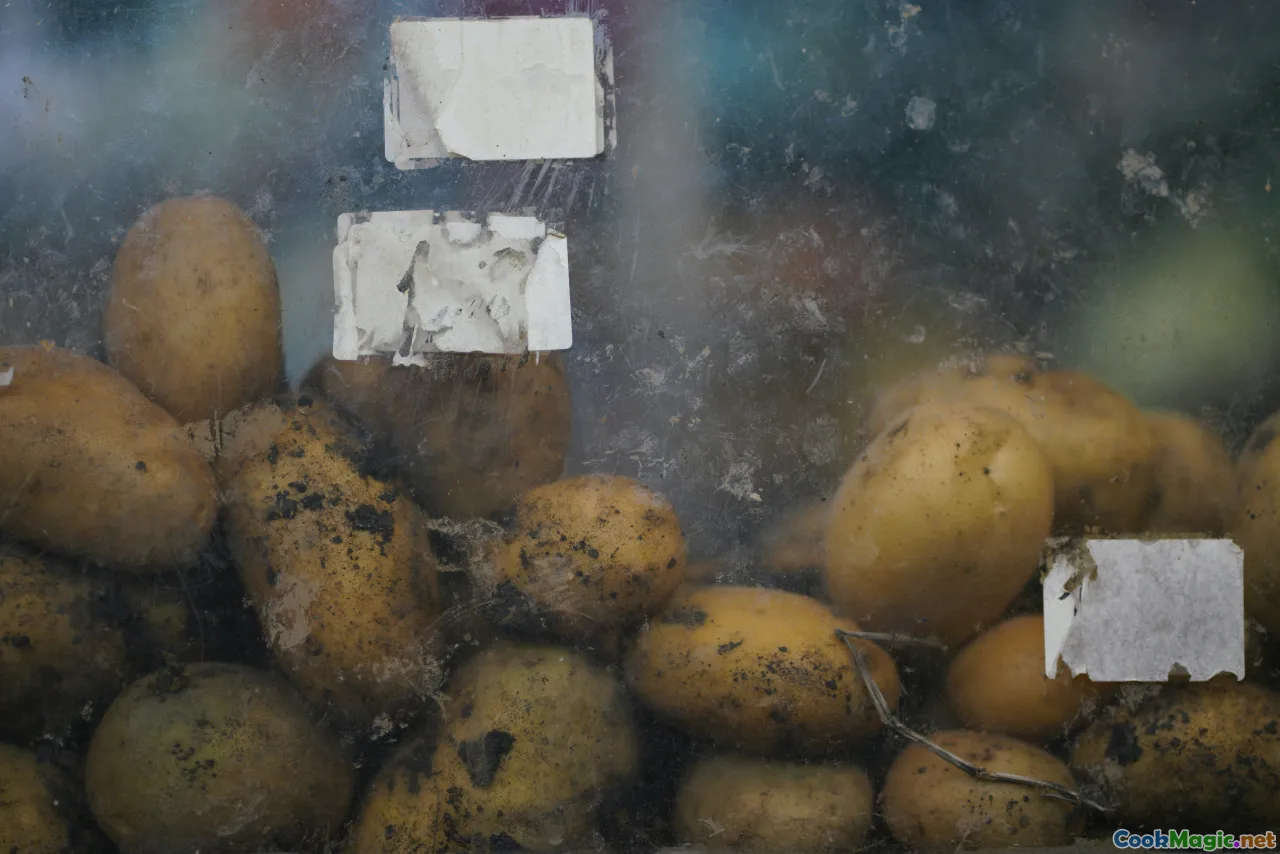
Raggmunk is a climate-friendly friend. Potatoes are low-impact, store beautifully, and turn violent weather into steady nourishment. Rapeseed oil thrives in northern climates. Lingonberries, often wild-harvested, embody the Nordic habit of turning landscape into pantry without coercion.
Waste less as you cook:
- Save potato peels, toss with a bit of oil and salt, and bake at 200°C for 10–15 minutes for crisp chips to sprinkle over soups.
- Use leftover aquafaba to make a quick vegan aioli for tomorrow’s sandwiches or to stabilize fruit sorbets.
- Stir extra rårörda lingon into morning porridge or swirl into oat yogurt.
- Reheat leftover raggmunk on a wire rack in a hot oven to re-crisp; they also freeze well between parchment sheets for emergency dinners.
Veganizing a beloved dish is an act of care — for animals, for the climate, and for the human hankering that nostalgia brings. Raggmunk’s cheerful thrift makes that care feel at home.
Beyond Savory: A Sweet Riff for Brunch
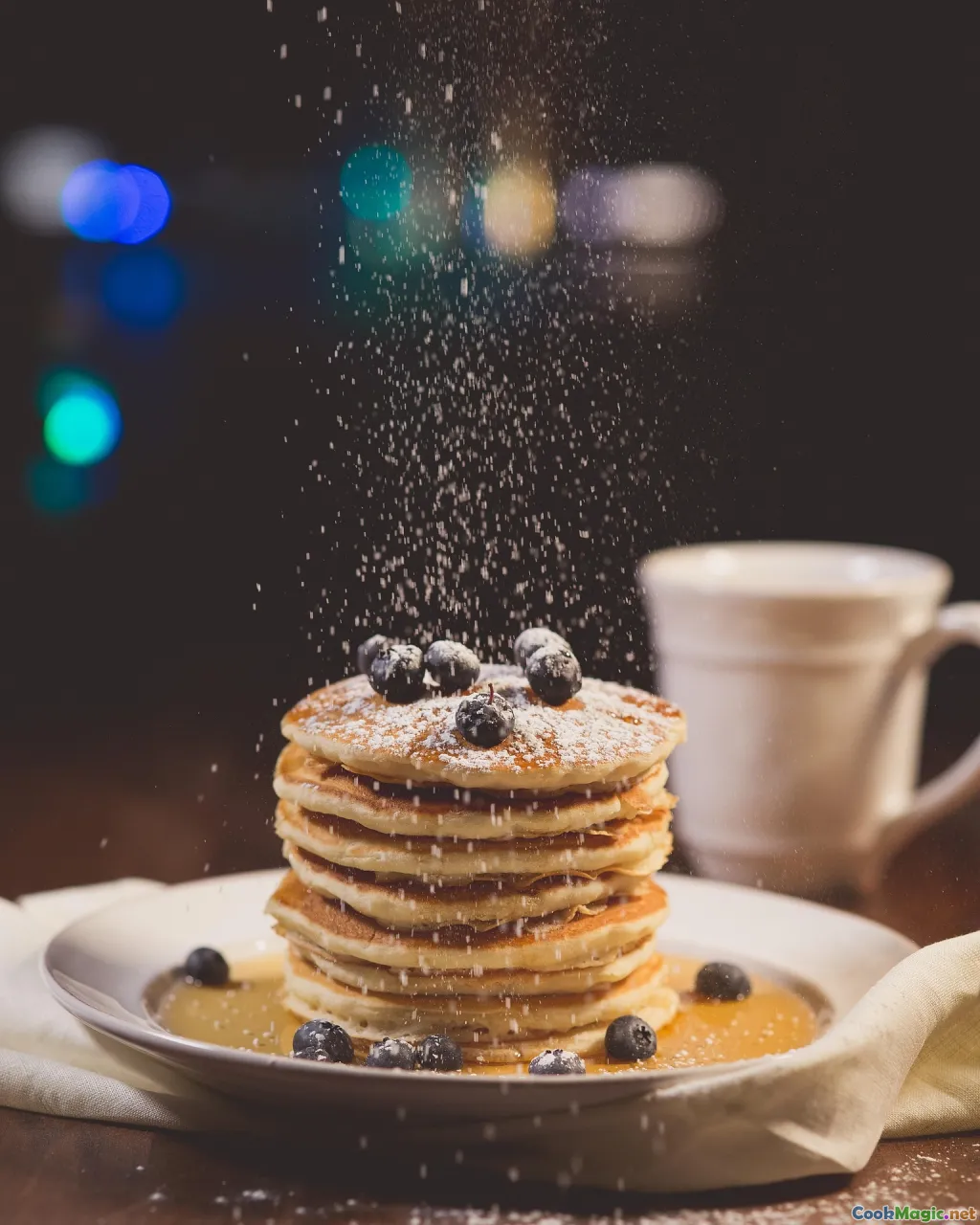
While raggmunk lives in the savory lane, a subtle sweet version can be a wink at brunch without becoming a sugar bomb. Think potato as texture, not flavor.
Sweet(ish) raggmunk for two
- 300 g starchy potatoes, grated and squeezed
- 20 g all-purpose flour + 10 g potato starch
- 200 ml oat milk
- 30 ml aquafaba, lightly whipped
- 1 tbsp sugar
- Pinch of salt
- 1/4 tsp vanilla powder or scraped vanilla seeds
- Rapeseed oil and a touch of vegan butter for frying
Fry thin in a clean, well-oiled skillet until golden. Dust with a whisper of powdered sugar and serve with tart cloudberries or sea buckthorn jam and a spoon of vegan crème fraîche. The key is restraint; this is not a pancake stack but a play on texture — crisp, barely sweet, lifted by a sour berry that keeps it Nordic.
A Lunch in Linköping: A Story About Why This Matters
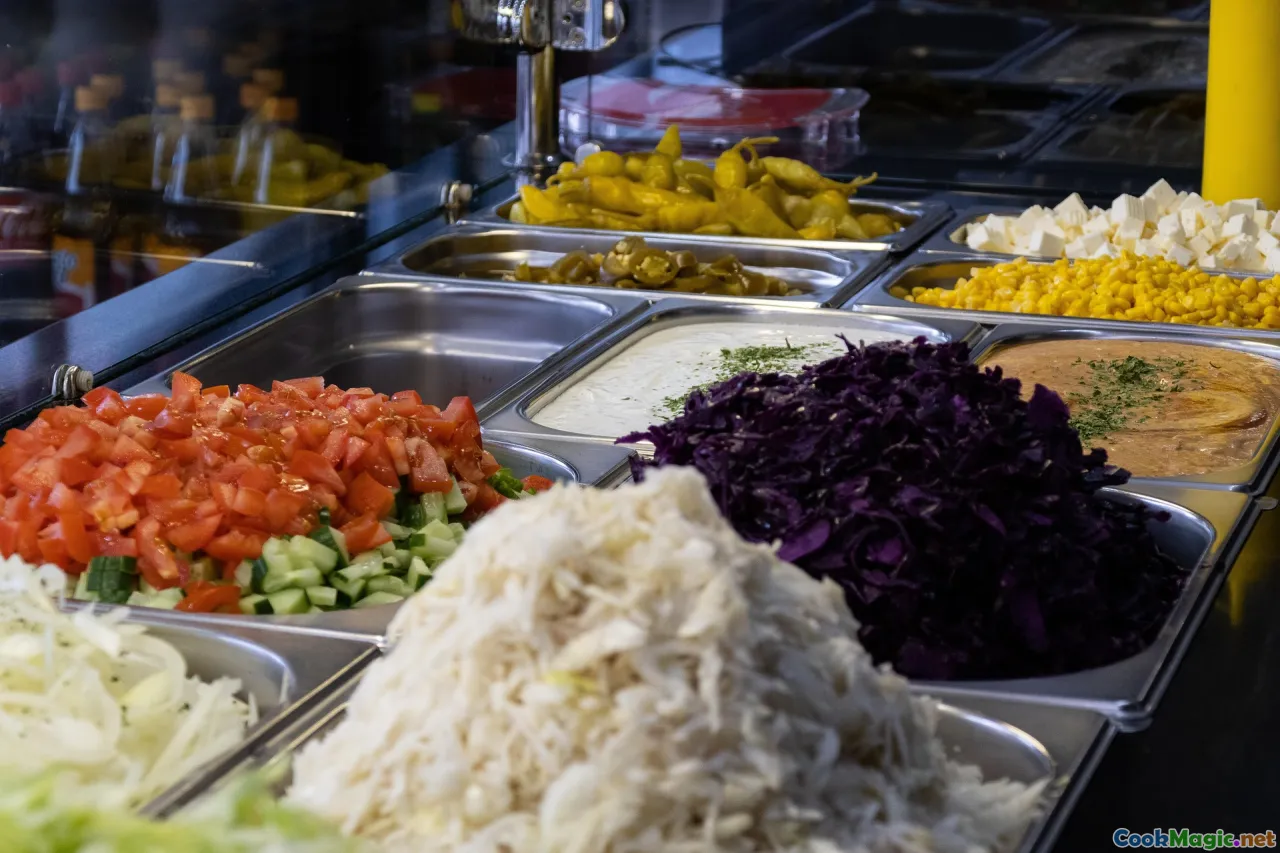
In Linköping, I once followed a line of students into a lunch spot that served today’s dishes written on a board that looked older than I was. The woman behind the counter — her name tag said Gun — ladled out pea soup in bowls as deep as well lids. She nodded toward a pan and said, in Swedish that I mangled back to her, that yes, it was raggmunk day, and yes, she had some without fläsk if I wished. I did. She fried mine in a separate pan out of kindness more than policy, and said she liked them thinner, because why would you want less crisp and more dough?
We ate at communal tables. The window glass fogged a little with each breath and un-fogged when someone opened the door. Outside, bicycles leaned against each other as if gossiping in the cold. The pancakes tasted like small decisions done well: a pan heated enough, an extra moment squeezing the grated potato, a willingness to wait for the first side to truly brown before flipping. The lingon was raw-bright and the cucumber crunchy with dill. I remember the way the edges sounded when the fork broke them — a soft chime.
Food memory is often an echo we chase. Vegan raggmunk isn’t a one-to-one reproduction of a day like that; it’s a new line in the same song. The melody — crisp against tender, savory against bright — remains. The words change. The feeling stays.
Comparison Corner: Latke, Rösti, Draniki, Boxty — Why Raggmunk Is Its Own Thing

- Latke: Grated potato bound with egg and a little flour, spooned into sizzling oil in mounds. Crisp but thicker, crispy shreds on the outside, soft in the middle. Flavor often onion-forward and served with applesauce or sour cream. Vegan latkes exist and are glorious, but their shape and mass are distinct.
- Rösti: Just potato, often partially cooked or par-cooked then shredded and packed into a cake. Wide, flat, deeply crisp discs with a profound potato sweetness. No batter — the potato’s own starch binds it.
- Draniki: Belarusian pancakes of grated potato with minimal additions, thinner than latkes, often fried darker. They feel sibling-close to raggmunk but lack the batter’s flowing lightness.
- Boxty: Irish family with three types; the pancake version combines mashed potato and raw grated potato in a flour batter. Closer to raggmunk in method than most, but taste and texture lean toward a bready chew and a thicker cake.
Raggmunk’s uniqueness is the union of pancake mechanics (a pourable batter) with the unruly charm of raw shreds. It behaves like a crepe that went to the forest and came back with twigs in its hair.
Advanced Variations for the Curious Cook

- Buckwheat backbone: Swap 20% of the flour for light buckwheat flour to add faint nuttiness and a whisper of crepe Breton earth. The color deepens; the crisp remains.
- Fermented batter: Whisk 1 tbsp of active rye sourdough starter into the batter and let it sit for 2 hours at cool room temp. Subtle tang, delicate bubbles, and a more toothsome structure.
- Smoked salt and juniper: Replace part of the salt with alder-smoked salt and crush one juniper berry into the batter for a Nordic woodland note that pairs beautifully with mushrooms.
- Spruce vinegar finish: Dot the plate with spruce tip vinegar or a bright dill oil to give the impression of eating near pine and sea.
Each of these should be gentle; the main character is still potato.
Service for a Crowd: Raggmunk Without Losing Your Mind

- Set up two pans to double your output; keep fried pancakes warm on a wire rack in a 90–100°C oven so they don’t steam and soften.
- Mix the batter base in advance but grate and add potatoes just before frying to prevent oxidation and water release. If you must hold, keep the grated potato submerged in cold water, then drain, salt, squeeze, and add to the batter at the last moment.
- Rårörda lingon can be made days ahead; pressgurka benefits from chilling for an hour. Vegan fläsk options roast or fry well a la minute.
- Don’t stack pancakes on a plate; steam is the enemy of crisp. The wire rack is your friend.
When the pans go, the kitchen sounds like rain. People find their way to the stove. That’s the kind of service I love.
I come back to raggmunk often because it embodies something Sweden taught me without words: practical beauty. The dish asks you to manage water and heat, to wait for color, to trust your senses. It’s a lesson as much as a meal. And in its vegan form, it tells a new part of the story — that tradition isn’t a museum, it’s a living room.
Put on a pot of coffee. Heat the pan until it hums. Squeeze the potato hard, then show it mercy in the skillet. When the edges look like stained glass and the middle still breathes, flip. Serve with lingon that flash red against winter light, with mushrooms that smell like rain, with cucumbers that crunch like fresh snow. Eat while it’s hot. And remember what the old lunch lady said: thinner is better, because why would you ever want less crisp and more dough?









